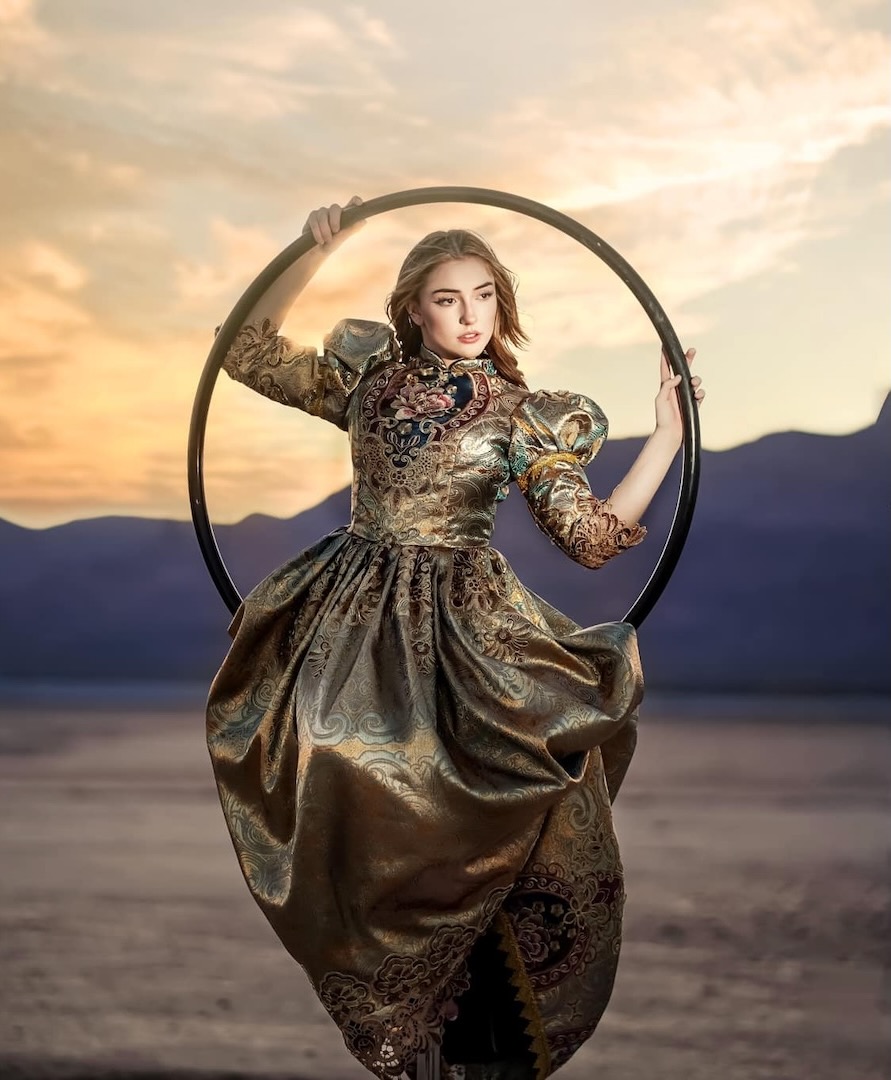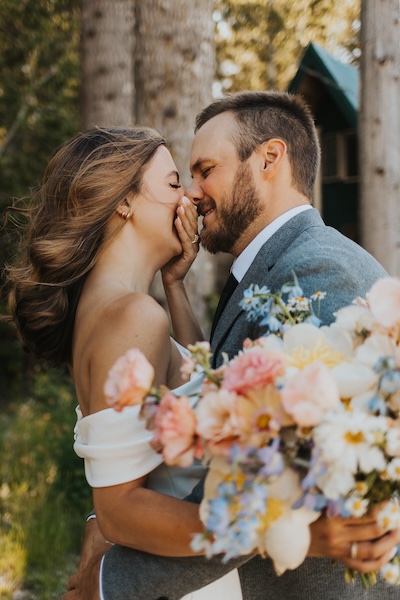WPPI
The goal of WPPI’s photo competitions is to “encourage, educate and motivate wedding and portrait photographers committed to their craft,” says Arlene Evans, WPPI’s Director of Content. One of the ways the competitions motivate photographers is by offering critiques to photographers who enter their work. To glean insight into that process, we asked three recent WPPI judges to share insight into how they critique and provide valuable feedback to the image-makers during the judging process.

[Read: How WPPI’s Photo Competitions Inspire Creativity]
Adds Evans: “I think it’s so important for photographers to participate in competitions. It’s a great way to see what your peers are creating and achieving recognition in the community.”

Competition entrants receive written critiques from three judges for each digital image submitted with an option for an audio critique. The judges’ feedback prepares entrants for the next phase of the awards program and helps them progress on their journey of growth and prestige within their community.

Rangefinder asked WPPI judges Natalie Licini, Audrey Woulard and Pete Wright how they each approach an image when judging the WPPI competitions and doling out constructive feedback. Here’s what they had to say:
How do you critique these images in a way where the image-makers can truly learn from the feedback?
Natalie Licini: When I offer feedback to entrants, I focus on technical areas to improve. I might say, “Bring out the detail in the shadow areas. Avoid cropping hands or arms.” My approach is to respectfully pinpoint specific areas to address in the image.
Audrey Woulard: I think there is always something good in every image and each image-maker brings something special to every single image that they create. It is up to me as a judge to find it. Not only is it my job to find it, it is also my job to point that out. Looking at all the aspects of an image to try and understand the intent of an image-maker can help explain what is needed to make it stronger. It is about giving them the “a-ha” moment needed to take their work to the next level.
Pete Wright: During this portion of a critique, I make sure that I don’t just tell them about the areas of concern, but also give them suggestions for ways to address them. I think the worst thing is for someone to tell you that you’ve done a really poor job on anything and not give you any tips for ways to improve it next time. I think it would discourage anyone—they wouldn’t know if they were making the same exact mistakes again. I always try to end with encouragement by commenting on other things they have done well, thanking them for entering and encouraging them to stay at it.
Do you have a format or approach you use when judging WPPI photo competitions?
NL: When I judge an image, the initial impact and first impression helps me put the image within a scoring range such as standard practice, average, above average or higher. Next I look for the story and technical aspects such as lighting, posing and post-production to solidify my score.
AW: I find that I don’t have a specific approach or format because each image is different. I believe that the image-makers deserve to have all of their images judged in their own light and not according to a certain script.
PW: I always like to remember that the people who entered aren’t doing so because they have to. They are entering print competition because they want to see how their work is received and hopefully improve from the experience. If their experience is extremely negative, then they will likely not return, so I hope to make even a low score a positive experience for those entering.
When you are not judging the types of images you yourself excel at creating, how do you give advice for those images?
NL: When I judge an image that is not the type of work I would create, I consistently give constructive feedback to the maker to help bring the image up into the next category. I offer lighting, post-production, composition, posing or other technical feedback and adjustments to consider to raise the score on every type of image, regardless of whether I personally create this work. The same principles apply for all genres of photography.
AW: I am inspired by work that I am not meant to create because it helps me see my work in a new light. It helps shape my perspective. With that said, understanding intent doesn’t mean that your personal work must match the work that you’re judging. Understanding light, composition and the like are absolutes, in my opinion. You’re able to see it in many different genres and styles of photography. Because I understand that process, it is easy to give the image-makers advice regarding how to take their images to the next level.
PW: I always imagine the maker sitting right beside me as I am entering the score and discussing the image. I try to make sure that they understand I am leaning on all of my other experience as a photographer to give them feedback. I also try to not fall so strongly on that experience that I let preconceived notions about a type of work that I don’t typically do or maybe don’t care to create to effect the way I judge it. When that imaginary maker is sitting beside me, I always imagine what they would need to hear and if it was me, how I would like that information delivered. I think there is a lot we can learn from photographers from outside of our genre as they often see things in a way that maybe we had not imagined, and to dismiss that feedback would be a mistake because it might just be something that could help you grow.
Why do you think WPPI’s Photo Competitions are important learning tools?
NL: Whether you have been photographing for 2 or 20 years, WPPI’s photo competitions offer you the chance to receive feedback to improve your work. Often photographers take many images in a series. If a pose was stronger in another image in this series, you can edit a different version and submit it for 16×20. Leading up to that, it’s almost like a dress rehearsal that allows you to practice, improve and resubmit.
PW: It’s an opportunity to have a fresh set of eyes look at your work and give you feedback to learn from. I especially love when they are competitions that are all linked, so you can take an image, submit it, take the feedback you receive and make adjustments to the image and then resubmit to The Annual. The Annual competition is where we all want to shine.
What do you look for most (a style or voice, technical or both)?
NL: I look for voice—originality and story in an image. I hope to see something that stops me in my tracks and leaves me thinking about it long after I have walked away.
PW: Right off the bat, I look for impact. Is it an image that makes me laugh? Does it push me back into my chair? Does it evoke emotion? Is it something I have never seen before? If an image has impact and creates an internal dialogue for a judge as they are taking it in, then it can have a powerful result. I am a huge advocate for good technical imagery, and I feel that if the image was captured extremely well to begin with then not much post-production is needed on the backend. If I am looking at an image that has obviously had a lot of post-production done to it, I don’t want it to be because it is repairing flaws in the capture, but rather as an enhancement of an already strong image or the completion of a vision. I find in most cases that if that is the reason heavy post-production is done—and if it is done well—my mind should be able to let it become part of the story of the image and not a distraction from it. If it’s a scenario where there is great impact and wonderful technique, well then you have bottled magic!
What would you tell photographers to do before entering?
PW: First, find a photographer that has had some success in print competition to look at your work and give you feedback. Family and friends can encourage you, but use the experience of a professional to help you get the results that you and your family can be proud of.
Second, walk away from an image for a few days and then come back to it and see how your own opinion may change. Often we get too close to an image and so deeply entrenched that we look past simple flaws because we have become emotionally invested.
Third, be receptive to feedback. Not all of your images are going to be winners. In fact unless you are extremely fortunate, most of your images will range between 77 and 82. I always hated the phrase, “Have thick skin,” but it’s a true statement because if you get your feelings hurt by a score below what you wanted or expected and shut down mentally, then you may miss the opportunity to actually hear why it scored that way to improve the image. Judges aren’t inherently mean and they don’t go into print competition with the goal of making your day horrible. We want more than anything for every image we see to be a 100. Our goal as judges is that when we provide a critique, we want to help get you to a higher score. So be willing to listen and no matter what you score on an image, know that you always have room to improve.
NL: Print your photo, and then view and edit it several times over a 10-day period before you submit it. Print your photo at least 8 x 10 in size on fine-art or lustre paper and tape it on a well-lit wall and continue to look at it over the next five days. Look for and circle areas to improve, such as detail in the highlight and shadow areas. Check to ensure that the brightest part of your image is your subject’s face, for example, and not their elbow. Look at skin tones and make sure they are consistent throughout the image. Then reprint your image and hang it on the wall again and look for additional areas to improve. Trust me! This may sound like a tedious process to some, but for me, it is how I have created some of my absolute favorite portraits over the years. Also, consider hanging it upside down to see additional lighting and technical areas to improve upon.





